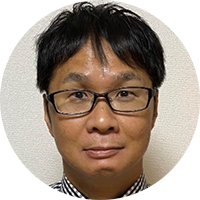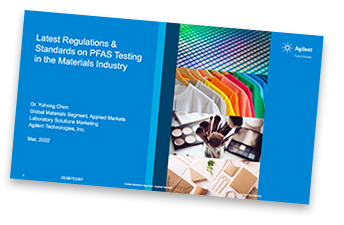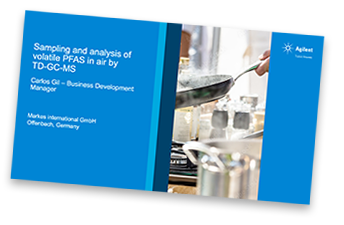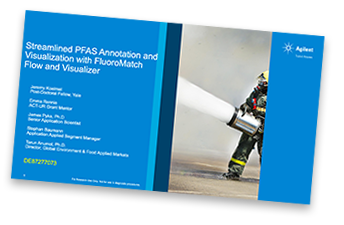Per- and polyfluoroalkyl substances (PFAS) are now known to be ubiquitous, being detected in several matrices including water, air, soil, animals, commercial products and even in humans. Yet, only a handful of PFAS have been monitored in detail globally while even fewer have had toxicological evaluations performed on them. With >6,000 estimated to have been commercially produced, the need for robust and reliable testing & analysis of these compounds is critical. This symposium, produced in collaboration with Agilent, brings together experts in the field of PFAS from across the globe to discuss a wide variety of topics to improve PFAS testing for widescale monitoring and improved data quality in a number of different matrices.
Format: On-demand Presentations
Separation Science, in collaboration with Agilent, offers an on-demand symposium covering new methods in PFAS testing, featuring thought leaders from across the globe. By watching the presentations from the symposium you will learn about:
- The latest advances in quantification of legacy and novel PFAS
- Developing and accreditation for routine and regulatory PFAS methods including EPA and EU guidelines
- Novel analytical techniques to identify new PFAS
- Testing methods optimized for water, air, commercial products, textiles, soil and others.
Featured presentations available to watch include:
PFAS Analysis: Application in the Water Works of Berlin, Germany Frederik Zietzschmann (Laboratory of Berliner Wasserbetriebe, Germany)
Frederik Zietzschmann (Laboratory of Berliner Wasserbetriebe, Germany)
PFAS are an abundant class of legacy and current contaminants in the catchments of many water works around the world. In Berlin, Germany, PFAS are monitored extensively due to the prospective strict regulatory measures from the European Union and German environmental authorities. With required limits of quantification in the very low ng/L range, sensitive techniques are applied and potential improvements are explored. These analytical means are complemented by research activities regarding PFAS analysis, sampling, and removal, as well as contributions to national and international standardization.
Perspectives and Challenges of Commercial Environmental PFAS Testing in the USA Stephen Somerville (Technical Director – PFAS, Pace Analytical, USA)
Stephen Somerville (Technical Director – PFAS, Pace Analytical, USA)
As regulatory action on PFAS contamination and exposure expands globally, contract labs providing the necessary analyses face a challenging technical and business environment. Within the USA, there are very few standardized methods covering what are a wide variety of environmental and commercial matrices, with refinements and new methods rapidly being introduced to expand applicability and improve resultant data. New client investigations – driven by current, proposed, or expected regulations – drive technical innovation and lead to new commercial opportunities for contract labs. Maintaining a focus on technical quality and compliance while managing a wide range of applications and expectations, Pace strives to provide a portfolio of valuable product offerings to a rapidly evolving marketplace.
Novel Analytical Tools for Per- and Poly-fluoroalkyl Compounds and ISO21675 Dr. Nobuyoshi Yamashita (Chief Senior Research Scientist at the Research Institute for Environmental Management, National Institute of Advanced Industrial Science and Technology [AIST], Japan)
Dr. Nobuyoshi Yamashita (Chief Senior Research Scientist at the Research Institute for Environmental Management, National Institute of Advanced Industrial Science and Technology [AIST], Japan)
Development of ISO21675, the most recent International Standard Method for PFAS in water is described. Then, novel analytical tools for volatile/neutral PFAS in air and water are discussed. A brand-new technology, simultaneous analysis of neutral and ionizable per- and polyfluoroalkyl substances in air is firstly reported in front of audience. This research tool enables the next generation of mass balance analysis of all PFAS in the environment, namely more than five thousand chemicals. Heart of lecture is “how important QAQC for PFAS analysis”. Sensitivity of "1 pg/L" with 10%RSD and "1 ng/L" with 50%RSD are completely different world. Which do you choose?
Optimizing Water, Soil, and Serum Sample Extraction for PFAS analysis Dr. Bradley Clarke (Senior Lecturer in Environmental Science and Analytical Chemistry, University of Melbourne, Australia)
Dr. Bradley Clarke (Senior Lecturer in Environmental Science and Analytical Chemistry, University of Melbourne, Australia)
The quantification of PFAS from environmental samples is a complicated undertaking due to the high levels of contamination typically observed in most laboratories. Sample preparation and extraction are critical aspects of any workflow for PFAS analysis and demands a serious level of attention, like the LCMS operation. In this talk, I provide an overview of the sample extraction processes for the extraction of PFAS from water, soil, and serum, including steps taken to reduce sample volume without sacrificing limits of quantification.
Optimization and Application of Analytical Methods for Assessing PFAS Treatment and Toxicity Dr. Arjun Venkatesan (Associate Director, Center for Clean Water Technology, Stony Brook University, USA)
Dr. Arjun Venkatesan (Associate Director, Center for Clean Water Technology, Stony Brook University, USA)
PFAS are highly persistent and resistant to degradation and have been associated with reproductive toxicity, reduced growth metrics in newborns and elevated cholesterol levels in humans. Currently, there are no federal regulations for PFAS in drinking water and as a result many U.S. states have their own regulation or health advisory levels. Our laboratory at the New York State Center for Clean Water Technology (CCWT) has established a certified PFAS testing facility to support ongoing research focused on their occurrence, fate, treatment, and toxicity. This presentation summarizes our experience in developing various EPA methods for PFAS analysis and highlights some method modifications developed for specific applications.
Uncovering Xenobiotics in Nontargeted Analyses using Ion Mobility Spectrometry, Mass Defect Analysis and Machine Learning Erin S. Baker, Ph.D (Associate Professor, North Carolina State University, USA)
Erin S. Baker, Ph.D (Associate Professor, North Carolina State University, USA)
The identification of xenobiotics in nontargeted analyses is a vital step in understanding human exposure. Xenobiotic metabolism, excretion, and co-existence with other endogenous molecules however greatly complicates nontargeted studies. This presentation demonstrates how combining mass defect analysis, machine learning and liquid chromatography, ion mobility spectrometry and mass spectrometry (LC-IMS-MS) separations enables an in-depth understanding of molecular responses occurring due to chemical exposures.
In addition, you'll also gain access to a series of related presentations unique to the on-demand version of this symposium. These presentations are:
 Latest Regulations & Standards on PFAS Testing in the Materials Industry
Latest Regulations & Standards on PFAS Testing in the Materials Industry
Dr Yuhong Chen (Global Materials Segment, Applied Markets, Agilent Technologies)
 Sampling and Analysis of Volatile PFAS in Air by TD-GC-MS
Sampling and Analysis of Volatile PFAS in Air by TD-GC-MS
Carlos Gil (Business Development Manager, Markes International GmbH)
 Streamlined PFAS Annotation and Visualization with FluoroMatch Flow and Visualizer
Streamlined PFAS Annotation and Visualization with FluoroMatch Flow and Visualizer
Stephen Baumann (Application Applied Segment Manager, Agilent Technologies)
 Using Thermal Desorption and GC-MS/MS for the Analysis of PFAS Compounds in Air for Improved Detectability & Reliability
Using Thermal Desorption and GC-MS/MS for the Analysis of PFAS Compounds in Air for Improved Detectability & Reliability
Kurt Thaxton (Gerstel)
